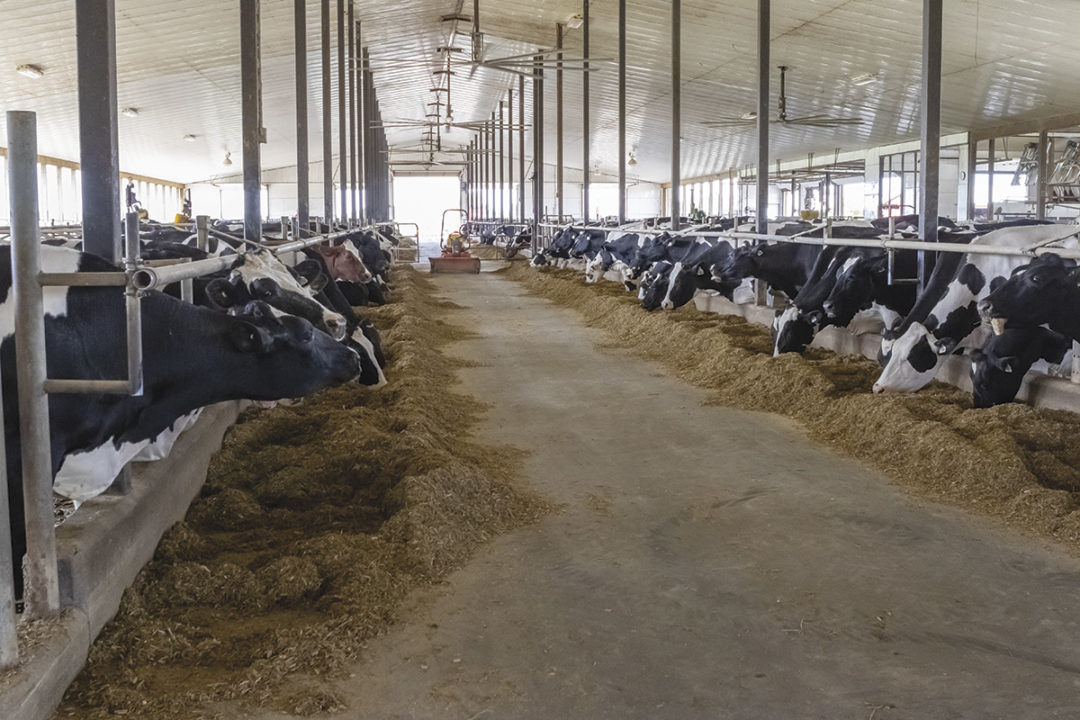To ready this article in French, click here.
The increasing size and scale of dairy farms is pushing the industry to heights that were never thought possible just a few decades ago. We now have tunnel barns being built that are more than 1,000 feet long, cross-ventilated barns with thousands of animals and hundreds of fans all under one roof, and we also have 100-inch fans available on the market. All of these seemed like crazy ideas in the not-so-distant past.
When we look at these changes from a ventilation perspective, we must keep in mind the two pillars of dairy barn ventilation.
- Air speed – Air speed is used to cool cows when they are in heat-stress conditions. Air speed recommendations from the industry vary from between 350 feet per minute to 500 feet per minute (1.8 to 2.5 metres per second) during times of peak heat stress.
- Air exchange – Air exchange is used to calculate the rate at which the air inside a dairy facility is turned over and replaced with fresh air from outside. The industry standard targets are 4 ACH in the coolest parts of the year and up to 60 ACH in the warmest parts of the year.
These pillars or foundations of dairy barn ventilation are nothing new and have been around for many years. That said, in just under a decade of focusing on dairy barn ventilation, I have seen these goalposts move as dairy facilities have become larger and we stick more animals under the same roof. What was once an acceptable target for air speed is now seen as the low end of the range, and what was once acceptable for an air exchange rate is no longer the norm. To this point, we as an industry have kept increasing the ventilation targets to keep pace with the increasing size of dairy farms.
The increase in size and scale of dairy operations has forced us to increase the size, scale and cost of our ventilation systems. Higher-efficiency fans, higher-performance fans, larger fans and just more fans in general have all become normal as the industry has adjusted to these ever-growing facilities. However, at a certain point we can no longer keep going in that direction. With the assistance of computer modeling and CFD analysis, modern fans are starting to reach the limits of peak efficiency. While larger fans do move more air, building design often limits the size of fans that can be effectively used.
So where does this leave the industry? The consolidation of the dairy industry is not slowing down, and facilities and herds are getting larger every year. Is the best ventilation solution more of the same? More fans, bigger fans, trying to squeeze out the last bits of efficiency physics allows? Why do we insist on building a 1,400-foot-long tunnel barn when 1,000-foot-long barns struggle with air quality and air speeds? Why do we build larger cross-ventilated barns when the current designs already push the limits on what we can effectively and efficiently ventilate?
I would argue it's time to start thinking outside the box when it comes to ventilation. This is the next step when it comes to dairy barn ventilation. Georg Cantor, a great German mathematician of the early 1900s, said that “Great innovation only happens when people aren’t afraid to do things differently.”










